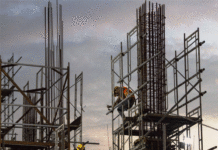New Delhi, August 11, 2017: On November 8, 2016 when Prime Minister Narendra Modi announced the revolutionary decision to demonetize Rs. 500 and Rs. 1,000 notes, it threw the nation in a tizzy. Panic and chaos gripped us, as over 85% of India’s cash was about to go out of circulation. But order was on its way. For the next few months, people found clarity and a sense of relief. As things gradually came back to normal, the analyses began. Most experts, and rightly so, put real estate among the top 3 sectors that would be affected by demonetization. It was largely true.
Real estate has been one of the most unorganized sectors in India. Of course, over the past decade, a lot of things have become clearer, easier and more organized. The first big impact of demonetization was seen in the humongous dip in property registrations, in the range of 35-40%. The panic amongst existing buyers and lack of clarity even for the builders, took some months to grapple with. But as the dust settled, the benefits were for all to see. The announcement of some new infrastructure projects like Sagarmala, SetuBharatm Project, Chardham Highway Project and the Bridge on the Chenab that aspires to be the highest bridge in the world, promise to bring in some much-needed boost. With the commercial and residential projects, however, prices have been affected and sales have remained slow for 2 quarters. A significant thrust is needed to push this sector out of its current slag.
Just when we had settled in with the demonetization effect, the GST (Goods & Services Tax) was announced. In the pipeline for years, GST finally became a reality on July 1, 2017 when it became effective all across India. Created on the principle of “One Nation. One Market. One Tax”, GST aims to simplify India’s layered tax system while simultaneously bringing more entities under the tax net by making evasion very difficult. The GST is very promising for the real estate sector and is being welcomes with open arms.
Earlier, everyone paid different taxes on their property, depending on an array of factors. So one’s tax liability depended on the state as well as the construction status of the property. Then there was VAT, Service Tax, Stamp Duty and Registration Fees, which were fluctuating and ambiguous. This made tax calculation extremely unclear, complicated and tedious. With the implementation of GST, most of these factors are taken care of.
Under this new tax, all under-construction properties will be charge at 12% of the property value. Stamp Duty and Registration Fees still remain separate but that’s not a big issue. For ready-to-move-in properties, no more indirect taxes will be levied. This is a huge improvement for the sector and a big relief to developers and buyers, both.The tax structure, overall, will help developers bring down the cost, the benefit of which is turn, passed on to the buyer.
Just like with demonetization, we expect that there will be increased clarity on the implementation of GST after the initial teething problems are dealt with. We are already beginning to see the upswing in the real estate sector, in about two quarters after the demonetization effect. At the grassroots, people have settled in and have gone back to their regular spending patterns. In the real estate sector, the trends are looking up, although it is moving very slowly.
In the coming months, the real estate sector will be hoping for clarity and easy implementation of these policies. Apart from that, a much-needed thrust from the government to encourage buyers to step forward, would be just what we need to keep the economy going.
Corporate Comm India(CCI Newswire)




















